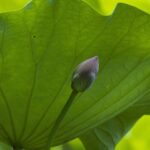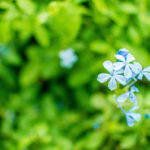Names of Famous Places in Finnish
On this page, you can find the names of famous places in Finnish. Included are popular places for tourists to visit all over the world. It includes historical places, natural wonders and feats of human innovation.
My list might be biased in ways I’m not aware of, because I’ve based it on random website listings of places worth visiting. I myself haven’t traveled very much, so most of these places aren’t familiar to me at all. Still, I thought it might be nice for people learning Finnish to see what these places are called in Finnish.
I’m not giving any additional information about these famous locations such as the country they’re in. If you’re interested, I do have a separate page with the Finnish names of the 200 most populated countries in the world here.
1. Naming conventions
The naming conventions for famous places in Finnish are different than in English.
1.1. Capitalization
English uses capital letters for each of the words of the place names (e.g. Sydney Opera House). Finnish only capitalizes the first part, while the common noun describing the type of place will start with a lowercase letter (e.g. Sydneyn oopperatalo). I have an in-depth article on the Finnish rules for capitalizing nouns here.
1.2. Word order
Finnish generally starts place names with a proper noun depicting the location or person of the famous place, followed by a descriptive noun. For example, “Sydneyn oopperatalo” has the city name Sydney, followed by the common noun oopperatalo, which describes the function of the building. The Kennedy Space Center (Kennedyn avaruuskeskus) follows the same pattern: the proper noun Kennedy refers to John F. Kennedy, followed by the common noun avaruuskeskus, which describes the function of the building.
For those two examples, English word order matches up perfectly with the Finnish version. However, English is less consistent. While “Kennedy Space Station” follows the “ᴘᴇʀꜱᴏɴ + ᴅᴇꜱᴄʀɪᴘᴛɪᴠᴇ ɴᴏᴜɴ” naming convention, “Temple of Artemis” consists of “ᴅᴇꜱᴄʀɪᴘᴛɪᴠᴇ ɴᴏᴜɴ + ᴏꜰ + ᴘᴇʀꜱᴏɴ”. A third convention English also allows for is “ᴘᴇʀꜱᴏɴ + ᴀᴘᴏꜱᴛʀᴏᴘʜᴇ + ᴅᴇꜱᴄʀɪᴘᴛɪᴠᴇ ɴᴏᴜɴ”, as in “Saint Basil’s Cathedral”.
1.3. The genitive case
The genitive case (e.g. Sydneyn “of Sydney”) is used in very many names of famous places in Finnish.
English has two linguistic methods that match up with the Finnish genitive. It allows us to use either “apostrophe s” or putting the place name at the end of the phrase with “of” in front of it. For example, for “Pyhän Vasilin katedraali”, English has opted for the name “Saint Basil‘s Cathedral”. Other options that are well within the English conventions could have been “Cathedral of Saint Basil” or plainly “Saint Basil Cathedral.”
2. Placename/person + genitive + descriptive common noun
The first group of famous places in Finnish I’m presenting follows the most common naming convention. These names consist of two elements: 1) the name of a city, area or person in the genitive case and followed by 2) a descriptive noun.
| Finnish | English |
|---|---|
| Sydneyn oopperatalo | Sydney Opera House |
| Dionysoksen teatteri | Theatre of Dionysus |
| Mount Wilsonin observatorio | Mount Wilson Observatory |
| Kennedyn avaruuskeskus | Kennedy Space Center |
| Halikarnassoksen mausoleumi | Mausoleum at Halicarnassus |
| Artemiin temppeli | Temple of Artemis |
| Karnakin temppeli | Karnak Temple Complex |
| Luxorin temppeli | Luxor Temple |
| Sulttaani Ahmedin moskeija | Sultan Ahmed Mosque |
| Djennén suurmoskeija | Great Mosque of Djenné |
| Neuschwansteinin linna | Neuschwanstein Castle |
| Bratislavan linna | Bratislava Castle |
| Schönbrunnin linna | Schönbrunn Palace |
| Chambordin linna | Château de Chambord |
| Malborkin linna | Malbork Castle |
| Diocletianuksen palatsi | Diocletian’s Palace |
| Versailles’n palatsi | Palace of Versailles |
| Topkapın palatsi | Topkapı Palace |
| Notre-Damen katedraali | Notre-Dame de Paris |
| Chartresin katedraali | Chartres Cathedral |
| Aachenin tuomiokirkko | Aachen Cathedral |
| Lalibelan kalliokirkot | Rock-hewn Churches of Lalibela |
| Pyhän Vasilin katedraali | Saint Basil’s Cathedral |
| Kölnin tuomiokirkko | Cologne Cathedral |
| Shwedagonin pagodi | Shwedagon Pagoda |
| Wieliczkan suolakaivos | Wieliczka Salt Mine |
| Leshanin jättiläisbuddha | Leshan Giant Buddha |
| Brandenburgin portti | Brandenburg Gate |
| Meidan Emam | Naqsh-e Jahan Square |
| Moskovan Kreml | Moscow Kremlin |
| Pisan torni | Leaning Tower of Pisa |
| Kheopsin pyramidi | Great Pyramid of Giza |
| Golden Gaten silta | Golden Gate Bridge |
| Kiinan muuri | Great Wall of China |
| Babylonin riippuvat puutarhat | Hanging Gardens of Babylon |
| Rio de Janeiron Kristus-patsas | Christ the Redeemer |
| Zeuksen kuvapatsas Olympiassa | Statue of Zeus at Olympia |
| Bayeux’n seinävaate | Bayeux Tapestry |
| Victorian putoukset | Victoria Falls |
| Iguassun putoukset | Iguazu Falls |
| Angelin putoukset | Angel Falls |
| Niagaran putoukset | Niagara Falls |
| Panaman kanava | Panama Canal |
| Hooverin pato | Hoover Dam |
| Bryce Canyonin kansallispuisto | Bryce Canyon National Park |
| Carlsbad Cavernsin kansallispuisto | Carlsbad Caverns National Park |
| Yellowstonen kansallispuisto | Yellowstone National Park |
| Torres del Painen kansallispuisto | Torres del Paine National Park |
| Rhodoksen kolossi | Colossus of Rhodes |
| Faroksen majakka | Lighthouse of Alexandria |
| Gizan sfinksi | Great Sphinx of Giza |
3. Names with a hyphen
In addition to the very popular “ᴘʀᴏᴘᴇʀ ɴᴏᴜɴ + ɢᴇɴɪᴛɪᴠᴇ + ᴅᴇꜱᴄʀɪᴘᴛɪᴠᴇ ɴᴏᴜɴ”, Finnish also has a small number of places with a hyphen. For example, the Eiffel Tower is called “Eiffel-torni” in Finnish.
| Finnish | English |
|---|---|
| Eiffel-torni | Eiffel Tower |
| Terrakotta-armeija | Terracotta Army |
| Pergamon-museo | Pergamon Museum |
| Bolšoi-teatteri | Bolshoi Theatre |
| Mahabodhi-temppeli | Mahabodhi Temple |
| Guggenheim-museo | Guggenheim Museum Bilbao |
| Mogao-luolat | Mogao Caves |
4. Direct quotes of location names
The names of some famous locations will look exactly the same as in English. This style of adopting words into Finnish acknowledges that these locations are icons in their own right and don’t need to be translated. Sometimes there are some very small differences betwee the English and the Finnish term. I’ve marked those in green in the table below.
Note that – if you do want to make it completely clear that the Taj Mahal is a mausoleum – you can use add a hyphen followed by the descriptive word: “Taj Mahal -mausoleumi“. While the official name is plain and simple “Taj Mahal”, this is a tactic often employed to make sure the other person knows what type of place we’re talking about. Some other examples for the table below: “Big Ben -kellotorni“, “Atomium-monumentti“, “Gateway Arch -muistomerkki“, “Borobudur-pyhäkkö” and “Hagia Sofia -museo“. Add a space in front of the hyphen when the location consists of more than one word.
| Finnish | English |
|---|---|
| Alhambra | Alhambra |
| Angkor Wat | Angkor Wat |
| Atomium | Atomium |
| Big Ben | Big Ben |
| Borobudur | Borobudur |
| British Museum | British Museum |
| Burj Khalifa | Burj Khalifa |
| CN Tower | CN Tower |
| Château Frontenac | Château Frontenac |
| Cliffs of Moher | Cliffs of Moher |
| Colosseum | Colosseum |
| Djemaa el-Fna | Jemaa el-Fnaa |
| Empire State Building | Empire State Building |
| Gateway Arch | Gateway Arch |
| Giant’s Causeway | Giant’s Causeway |
| Grand Canyon | Grand Canyon |
| Hagia Sofia | Hagia Sophia |
| Khardung La | Khardung La |
| Lotte World Tower | Lotte World Tower |
| Machu Picchu | Machu Picchu |
| Mont Saint-Michel | Mont–Saint-Michel |
| Monument Valley | Monument Valley |
| Mount Rushmore | Mount Rushmore |
| Museo del Prado | Museo del Prado |
| Pantheon | Pantheon |
| Parthenon | Parthenon |
| Pont du Gard | Pont du Gard |
| Sagrada Família | Sagrada Família |
| Salar de Uyuni | Salar de Uyuni |
| Space Needle | Space Needle |
| Stonehenge | Stonehenge |
| Taj Mahal | Taj Mahal |
| Tokyo Tower | Tokyo Tower |
Note that place names that have been adopted into Finnish as direct quotes don’t necessarily come from English. Thus, the Finnish name can be what it is in the original language of the monument, rather than what it is called in English. Below are some random locations for which this is the case:
| Finnish | English |
|---|---|
| Fontana di Trevi | Trevi Fountain |
| Forum Romanum | Roman Forum |
| Santa Maria del Fiore | Florence Cathedral |
| Canal Grande | Grand Canal |
5. Other naming conventions
When creating Finnish names for foreign places, Finns have tried out different naming conventions, so there is some variation in how foreign places have been named. This is true in English as well, but to a much larger extent. English is a very “free” language in the way it forms words.
The following table contains several groups:
- ᴀᴅᴊᴇᴄᴛɪᴠᴇ + ᴄᴏᴍᴍᴏɴ ɴᴏᴜɴ (#1)
- ᴄᴏᴍᴍᴏɴ ɴᴏᴜɴ ɪɴ ɢᴇɴɪᴛɪᴠᴇ ꜰᴏʀᴍ + ᴄᴏᴍᴍᴏɴ ɴᴏᴜɴ (#2)
- ᴏɴᴇ ᴡᴏʀᴅ ᴄᴏɴꜱɪꜱᴛɪɴɢ ᴏꜰ ᴛᴡᴏ ᴄᴏᴍᴍᴏɴ ɴᴏᴜɴꜱ (#3)
- ᴏɴᴇ ᴡᴏʀᴅ ᴄᴏɴꜱɪꜱᴛɪɴɢ ᴏꜰ ᴘʀᴏᴘᴇʀ ɴᴏᴜɴ ɪɴ ɢᴇɴɪᴛɪᴠᴇ ꜰᴏʀᴍ + ᴄᴏᴍᴍᴏɴ ɴᴏᴜɴ (#4)
| # | Finnish | English |
|---|---|---|
| 1 | Valkoinen talo | White House |
| 1 | Kultainen temppeli | Golden Temple |
| 1 | Iso Valliriutta | Great Barrier Reef |
| 1 | Kielletty kaupunki | The Forbidden City |
| 1 | Punainen linnoitus | Red Fort |
| 1 | Egyptiläinen museo | Museum of Egyptian Antiquities |
| 2 | Taivaan temppeli | Temple of Heaven |
| 2 | Pyhän haudan kirkko | Church of the Holy Sepulchre |
| 2 | Kuninkaiden laakso | Valley of the Kings |
| 2 | Kulttuurin ja tieteen palatsi | Palace of Culture and Science |
| 2 | Yhtenäisyyden patsas | Statue of Unity |
| 3 | Kivikaupunki | Stonetown of Zanzibar |
| 3 | Kalliomoskeija | Dome of the Rock |
| 3 | Länsimuuri, Itkumuuri | Western Wall, Wailing Wall |
| 4 | Gibraltarinvuori | Rock of Gibraltar |
| 4 | Yosemitenlaakso | Yosemite Valley |
| 4 | Vapaudenpatsas | Statue of Liberty |
| 4 | Fundynlahti | Bay of Fundy |
| 4 | Halonginlahti | Hạ Long Bay |
That’s all for this list of Finnish names of many famous places in the world!




